Article
Escape from Paris: History-Focused Day Trips from Rouen, France
Author(s):
Four major attractions in the world, the Bayeux Tapestry, Richard the Lionheart’s castle, Monet’s Giverny, and the Normandy Invasion Beaches are all within easy distance of Rouen, France.
Four major attractions in the world, the Bayeux Tapestry, Richard the Lionheart’s castle, Monet’s Giverny, and the Normandy Invasion Beaches are all within easy distance of Rouen, France. One way to tour them with in luxury is to stay in the five-star Hotel de Bourgtheroulde in Rouen and take leisurely day trips from there.
Bayeux Tapestry Depicting Events Leading to the Norman Conquest of England
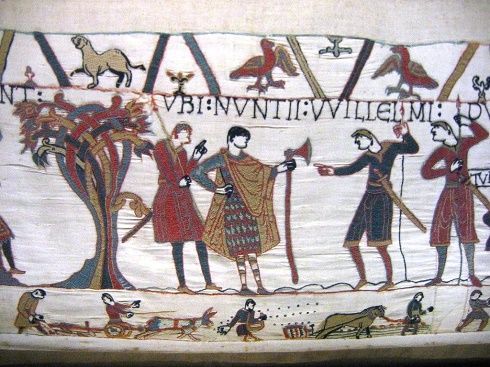
A segment of the Bayeux Tapestry above. Agricultural scenes are shown on the bottom of the tapestry in this section. Photo from Wikipedia.
The Bayeux Tapestry is located in Bayeux, France, which is an hour and 40 minutes from Rouen and can be combined with the tour to the Normandy Beaches
The tapestry is an embroidered cloth, wool on linen, and is 230 feet by 20 inches and dates to 1070 AD. It depicts events leading up to the Norman conquest of England and was probably commissioned by a bishop who accompanied the Norman invaders. He would have seen the events firsthand.
It is not known definitively where the tapestry was made, but it may have been in England instead of Bayeux as commonly thought. Regardless, it is now in the Museum Bayeux located in the lovely village of the same name.
Chateau Gaillard built by Richard the Lionhearted
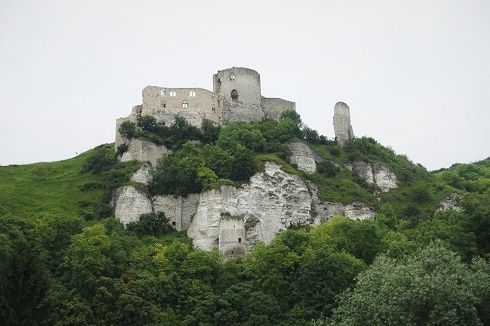
Chateau Gaillard in the early evening, summer, 2016. The castle was built by Richard the Lionheart in the 12th century. It is a one-hour drive from Rouen, France.
The castle called Chateau Gaillard is imposing, as it should be. It was thought to be impenetrable in the 12th century when it was build. Folklore suggests it was planned by Richard I, King of England and also duke of Normandy, commonly known as Richard the Lionheart, in what we now know as Northern France. The purpose of the castle was to prevent the then-king of France, Phillip Augustus, from reaching Rouen via the Seine from Paris.
It was only after Richard’s death that the castle was penetrated. A brave and perhaps olfactory-challenged soldier is said to have forced his way into the castle through a latrine that led to the chapel. From there, others followed and the drawbridge to the castle was opened, enabling the leader of France to have access to the North.
Giverny made famous by the painter Claude Monet
Monet’s life was not without spice. He started an affair with his patron’s wife while married to his first spouse, Camille Doncieux. After she died, he married Alice Hoschedé, his mistress. They had two children together, and, between them had eight children related to their earlier marriages. And, in spite of what must have been heavy family responsibilities, he managed to paint and groom a splendid garden at Giverny.
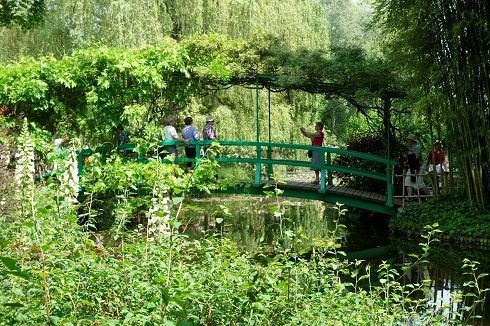
The bridge at Giverny made famous in Monet's paintings. Photo, summer, 2016.
Giverny is a one-hour drive from Rouen.
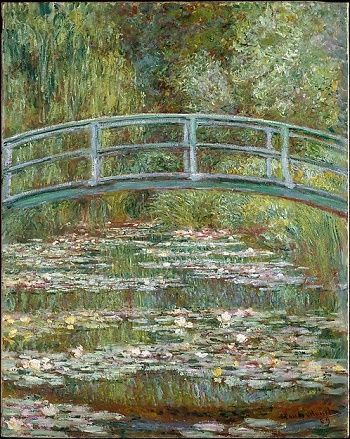
Bridge over a Pond of Water Lilies by Claude Monet, 1899.
The Metropolitan Museum of Art, New York City, NY.
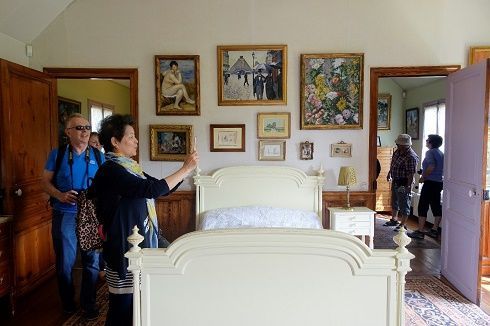
Monet's bedroom at Giverny. He had paintings in this room, which now features reproductions of those thought to be there earlier.
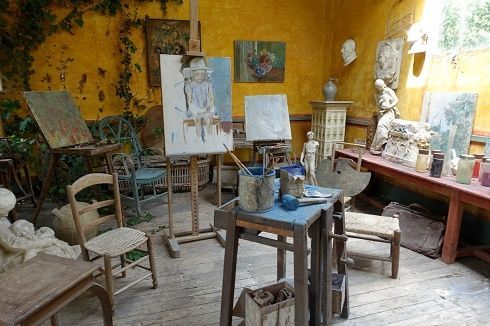
A guest studio at Giverny where visiting artists could paint.
Monet lived in Giverny from 1883 until he died in 1926. His stone farmhouse still stands and is available for tourists to visit as well as the gardens. There is even a museum with special exhibits of such artists as Gustave Caillebotte, who also painted in Giverny. The village of Auvers-sur-Oise where Van Gogh and other artist painted is nearby.
Normandy Beach where the Allies landed in World War II
This is a sobering trip and one that is not only thought provoking but also engenders sadness. The Normandy American Cemetery is the home of the bodies of 9,400 mostly men, but also four women, who died when taking Normandy. It is located high on the hill over one of the beaches code-named Omaha. The white crosses are perfectly lined up in row after row for known and also unknown soldiers who died there.
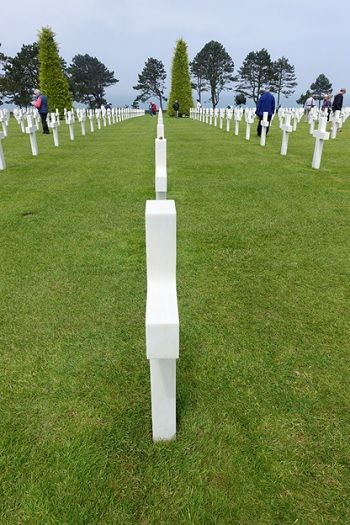
The perfectly aligned grave markers at the Normandy America Cemetery at Colleville-sur-Mer.
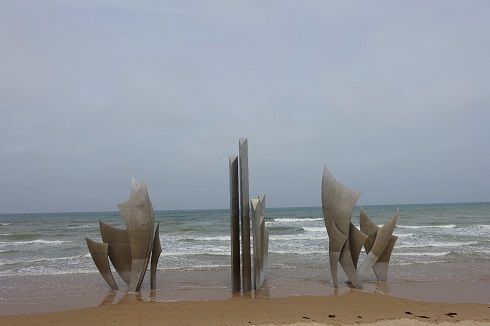
A sculpture entitled “The Braves” by Anilore Banon at Omaha Beach.
All photos by the author unless otherwise stated.
For More:
A History of Human Conflict: On the River from Normandy to Paris—a different take on a cruise venue.
Dry Cruising: Paris to Paris on the Viking Rolf—why I am suggesting taking day tours from Rouen rather than a cruise in the same area.



